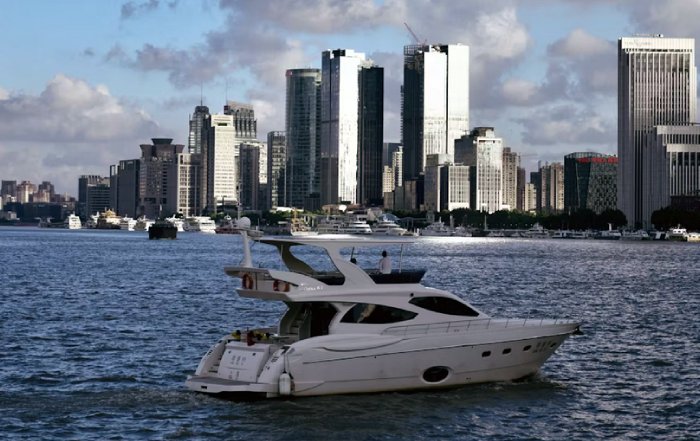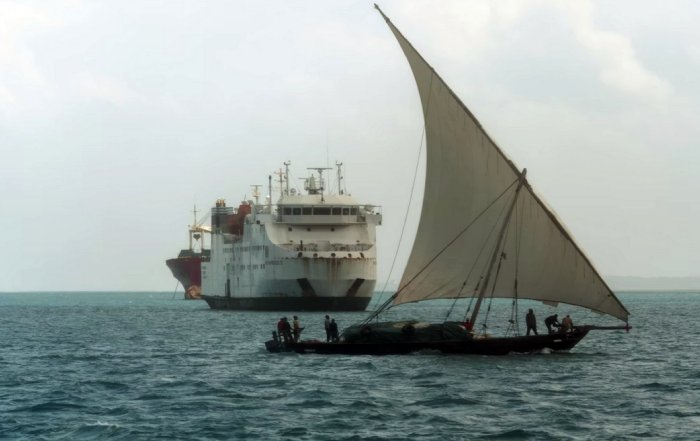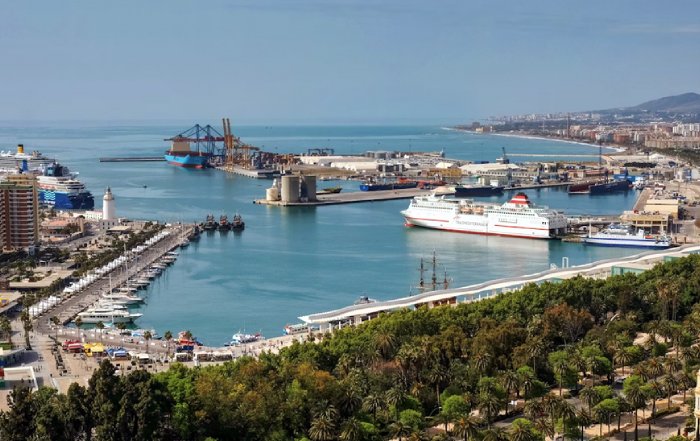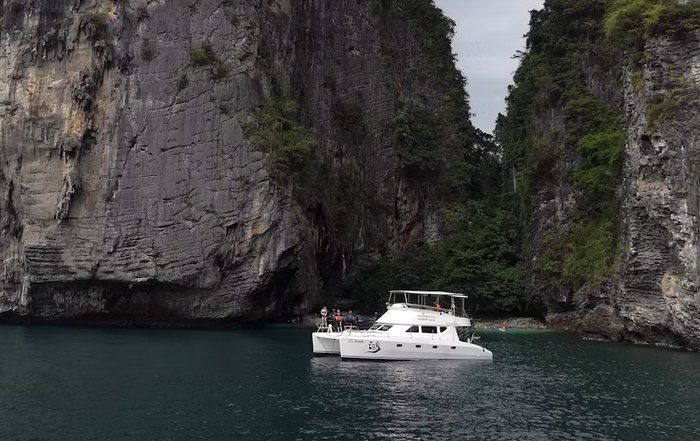The Business Trends in Global Yacht Chartering in 2025
The Globalization of Yacht Chartering
By 2025, global yacht chartering has evolved from a niche luxury pastime into a sophisticated, multi-billion-dollar segment of the wider experience economy, shaped by shifting consumer expectations, rapid digitalization, and a heightened focus on sustainability and regulatory compliance. The sector now spans traditional yachting heartlands in the Mediterranean and Caribbean, as well as emerging hubs across Asia-Pacific, the Middle East, and Africa, and this expansion has been accompanied by new business models, new customer demographics, and a more professionalized industry structure. For the editorial team at yacht-review.com, which has followed these developments closely through its coverage of industry news, boat reviews, and global cruising insights, the current moment represents a decisive inflection point where legacy practices are giving way to data-driven, guest-centric charter operations.
The yacht charter market is no longer dominated exclusively by ultra-high-net-worth individuals from a handful of Western economies; instead, clients increasingly hail from the United States, United Kingdom, Germany, France, Italy, Spain, Netherlands, Switzerland, Canada, Australia, and rapidly growing markets in China, Singapore, Japan, South Korea, Brazil, South Africa, and Thailand, alongside the established demand in the broader regions of Europe, Asia, North America, South America, and Africa. This diversification has forced charter companies, brokers, and yacht managers to adopt more sophisticated segmentation strategies and to align their offerings with cultural preferences, regulatory expectations, and service standards across multiple jurisdictions. As yacht-review.com has observed in its global coverage, the most successful operators are those that view globalization not only as a source of demand, but as a driver of operational resilience and innovation.
Shifting Client Demographics and Expectations
The profile of the typical charter client has changed markedly in the last decade. While traditional high-net-worth families from North America and Western Europe remain core customers, there is a pronounced rise in younger entrepreneurs from technology, finance, and creative industries, particularly in the United States, United Kingdom, Germany, and the fast-growing tech hubs of Singapore and China. These clients are more likely to be digital natives, comfortable booking complex services online, and they expect seamless, app-driven experiences and transparent pricing. They often prioritize experiences over ownership, aligning with broader global trends documented by organizations such as the World Economic Forum, where readers can explore the evolution of the experience economy.
For yacht-review.com, which has spent years analyzing how design, lifestyle trends, and family needs intersect on board, the most significant shift is not only who is chartering, but why they are chartering. Families from the United States, Canada, and Europe increasingly view yacht charters as safe, controllable environments for multi-generational vacations, combining privacy with curated experiences in destinations such as the Mediterranean, the Caribbean, and the South Pacific. Corporate clients from Germany, the United Kingdom, and Switzerland are using charters for high-level strategy retreats and client entertainment, integrating wellness, sustainability, and digital connectivity into their expectations. Meanwhile, a new cohort of first-time charterers in Asia, particularly in China, Japan, and South Korea, is exploring yachts as a symbol of achievement, but also as a platform for curated cultural and culinary experiences.
From Ownership to Access: The Rise of Flexible Charter Models
One of the defining business trends in global yacht chartering is the shift from traditional ownership toward flexible access models. Fractional ownership, membership clubs, and subscription-based charter programs have become more prominent, especially in markets where the cost and complexity of yacht ownership are perceived as barriers, such as the United States, United Kingdom, and Australia. This mirrors broader mobility trends seen in other sectors, where subscription services and shared access are replacing outright ownership, a pattern that analysts at McKinsey & Company have described in their work on mobility and subscription models.
Charter companies and yacht management firms are responding by structuring fleets and contracts to accommodate more frequent, shorter-duration bookings, often across multiple regions. For example, a single yacht might operate a summer season in the Western Mediterranean, a shoulder season in the Canary Islands, and a winter season in the Caribbean, with charter slots allocated to fractional owners and charter clients on a dynamic basis. yacht-review.com, through its coverage of boat innovations and business analysis, has observed that this approach demands greater sophistication in scheduling, maintenance planning, and crew management, but it also allows operators to maximize utilization and revenue while offering clients more flexibility.
Digital Platforms, Data, and the New Booking Ecosystem
Digitalization has transformed how charters are marketed, sold, and managed. Online platforms, mobile apps, and integrated customer relationship management systems now sit at the heart of the yacht charter business, enabling real-time availability, dynamic pricing, and personalized offers. Clients from technologically advanced markets such as the United States, Germany, Singapore, and the Nordic countries expect the same level of digital fluidity they experience in sectors like aviation and hospitality, where they can easily compare options, review ratings, and complete bookings online. Industry observers often draw parallels with developments in mainstream travel, as tracked by resources such as Skift, where readers can follow digital transformation in travel and hospitality.
For the editorial team at yacht-review.com, which has chronicled these developments in its technology section, the most profound change is the emergence of data as a strategic asset. Charter brokers and fleet operators increasingly rely on analytics to forecast demand by region, season, and vessel type, to optimize pricing, and to tailor onboard experiences to specific client segments. This data-driven approach is particularly evident in competitive markets such as the Mediterranean, where charterers from France, Italy, Spain, and the United Kingdom demand high levels of customization, and in the Caribbean, where North American clients often seek seamless integration with private aviation and luxury resort stays.
Design and Onboard Experience as Strategic Differentiators
Yacht design has become a central differentiator in the charter market, with interior and exterior layouts increasingly tailored to the expectations of diverse client groups. Charterers from Europe and North America often prioritize open social spaces, wellness zones, and flexible cabins suitable for families, while clients from Asia may place greater emphasis on formal dining areas, private suites, and entertainment spaces suitable for business hosting. This evolution in design philosophy has been carefully documented by yacht-review.com in its design features, where the emphasis is on how layout, materials, and technology contribute to guest comfort and operational efficiency.
The influence of leading design studios and shipyards, including Benetti, Feadship, Lürssen, Sanlorenzo, and Oceanco, is evident in the increasing prevalence of beach clubs, fold-out terraces, hybrid propulsion spaces, and wellness amenities such as spas, gyms, and yoga decks. These features are no longer reserved for the largest superyachts; they are filtering down to smaller charter yachts in the 24-35 meter range, making high-end experiences accessible to a broader clientele. Industry observers often cross-reference these trends with reports from bodies such as the International Superyacht Society, where professionals can explore design and innovation themes. For charter operators, investing in contemporary design is not merely an aesthetic choice; it is a commercial imperative that directly influences utilization rates, charter fees, and repeat bookings.
Sustainability, Regulation, and ESG Pressures
Sustainability has moved from the margins to the center of strategic decision-making in global yacht chartering. Clients, especially in Europe, North America, and increasingly in Australia and New Zealand, are more aware of environmental issues and seek reassurance that their leisure choices are aligned with responsible practices. This is reflected in growing interest in hybrid propulsion, advanced hull designs that reduce fuel consumption, alternative fuels such as biofuels and methanol, and onboard systems that minimize waste and emissions. Organizations such as the International Maritime Organization provide regulatory context, and stakeholders can learn more about emissions regulations and decarbonization that are shaping vessel design and operation.
From the perspective of yacht-review.com, which has dedicated coverage to sustainability in yachting, this shift is also about transparency and verifiable ESG (environmental, social, and governance) performance. Charter companies are increasingly required to document fuel consumption, waste handling, and crew welfare practices, particularly when dealing with institutional or corporate clients that have their own ESG commitments. Industry associations and classification societies are working on standardized frameworks and labels, while broader business resources such as Harvard Business Review offer executives a chance to learn more about sustainable business practices. In parallel, regulations such as emission control areas in Europe and North America, and local environmental rules in destinations like Norway, Sweden, and certain marine parks in Thailand and Australia, are forcing operators to upgrade fleets and adapt itineraries, which has direct implications for charter pricing and availability.
Regional Dynamics and Emerging Destinations
The geography of yacht chartering is in flux. Traditional hotspots such as the French and Italian Rivieras, the Balearic Islands, the Greek islands, the British Virgin Islands, and the Bahamas remain central to the market, but newer destinations are gaining prominence as clients seek more exclusive, less crowded experiences. Norway, Sweden, Finland, and Denmark are attracting attention for their dramatic fjords and archipelagos, while Croatia and Montenegro continue to grow as competitive Mediterranean bases. In Asia, Thailand, Indonesia, and Malaysia offer rich cruising grounds that appeal to both regional clients and long-haul travelers, and Singapore is positioning itself as a strategic hub for Southeast Asian yachting. Africa and the Indian Ocean, including South Africa, Seychelles, and Madagascar, are slowly emerging on charter itineraries, particularly for adventurous clients.
For yacht-review.com, whose travel and cruising coverage and cruising features track these shifts closely, the regional diversification presents both opportunities and challenges for the industry. Operators must navigate varying regulatory regimes, port infrastructures, and service ecosystems, as well as cultural expectations and security considerations. The rise of new destinations also requires investment in local crew training, provisioning networks, and maintenance capabilities, often in partnership with regional authorities and tourism boards. Global tourism data from organizations such as the UN World Tourism Organization help contextualize these developments, and professionals can review global tourism trends to align charter strategies with broader visitor flows.
Charter Economics, Pricing, and Risk Management
Behind the glamour of yacht chartering lies a complex economic equation. Fleet owners and managers must balance acquisition costs, depreciation, maintenance, crew salaries, insurance, fuel, and regulatory compliance against charter revenues that are inherently seasonal and sensitive to macroeconomic conditions. Exchange rate fluctuations, interest rates, and geopolitical events all influence demand, especially in key source markets such as the United States, United Kingdom, Germany, and China. As yacht-review.com explores in its business analysis, charter operators are adopting more sophisticated financial planning and risk management tools to navigate these uncertainties.
Dynamic pricing, long a feature of the airline and hotel industries, is becoming more common in yacht chartering, allowing operators to adjust rates based on demand, availability, and booking windows. Longer-term charter agreements, corporate contracts, and partnerships with luxury travel agencies provide additional revenue stability. Insurance products tailored to charter operations, including coverage for cancellations, weather disruptions, and political risk, are gaining traction, particularly for yachts operating in emerging or remote regions. Financial and risk management insights from institutions such as the International Monetary Fund, where executives can track global economic outlooks, offer useful macro context for strategic planning in the charter sector.
Technology Onboard: Connectivity, Safety, and Guest Experience
Onboard technology has become a decisive factor in charter selection, especially for business clients and younger, digitally connected travelers. High-speed connectivity via satellite and 5G, advanced entertainment systems, and integrated control interfaces are now expected on mid- to large-size charter yachts. Clients from the United States, Canada, the United Kingdom, Germany, and Scandinavia increasingly demand the ability to work remotely from the yacht, hold video conferences, and access cloud-based services, making connectivity a core part of the value proposition. yacht-review.com, through its technology coverage, has repeatedly highlighted how investment in reliable onboard networks and cybersecurity is now as critical as investment in décor or tenders.
Safety and security technologies are also advancing rapidly. Modern charter yachts are equipped with sophisticated navigation systems, dynamic positioning, advanced fire detection and suppression systems, and comprehensive monitoring of mechanical and environmental parameters. Crew training in the use of these systems, as well as in medical response and crisis management, is a key differentiator in a market where clients expect not only luxury but also assurance. Industry standards and training frameworks are supported by organizations such as the Royal Yachting Association, where professionals and enthusiasts can explore training and safety resources. For charter companies, integrating technology into a coherent, user-friendly ecosystem that enhances rather than complicates the guest experience is a central design and operational challenge.
Community, Events, and the Broader Yachting Culture
The business of yacht chartering does not exist in isolation; it is embedded in a broader yachting culture that includes boat shows, regattas, owner and charterer communities, and a network of service providers and destinations that collectively shape perceptions and demand. Iconic events such as the Monaco Yacht Show, the Fort Lauderdale International Boat Show, and regattas in the Mediterranean and Caribbean serve as focal points for networking, deal-making, and brand positioning. These gatherings also provide a platform for showcasing new designs, technologies, and sustainability initiatives, which are then amplified through specialist media and digital channels. yacht-review.com has consistently provided coverage of such industry events, offering its audience insights into how these occasions influence charter trends and client expectations.
Community building is increasingly important as operators seek to cultivate loyalty and advocacy among charter clients. Exclusive experiences, curated itineraries, and personalized follow-up communications are used to build long-term relationships, while digital communities on social platforms and specialized forums allow charterers to share experiences and recommendations. For families, in particular, the sense of belonging to a safe, trusted ecosystem of yachts, crews, and destinations is a powerful driver of repeat business, a theme that yacht-review.com has explored in its family-oriented features. As the industry becomes more global and competitive, the ability to foster a sense of community and shared values, especially around sustainability and responsible travel, becomes a differentiating asset.
The Strategic Role of Specialized Media and Expertise
In a market characterized by rapid change and increasing complexity, specialized media and expert analysis play a crucial role in helping stakeholders make informed decisions. yacht-review.com, drawing on years of experience in yacht reviews, design analysis, cruising insights, and business reporting, has positioned itself as a trusted source for charter clients, brokers, owners, and industry professionals. By combining detailed reviews of charter yachts with coverage of historical context, community dynamics, and emerging technologies, the platform offers a holistic perspective that supports both strategic planning and day-to-day decision-making.
This role is particularly important in 2025, as charter clients seek reassurance on issues ranging from safety and sustainability to regulatory compliance and crew professionalism. Independent, experience-based evaluations and analysis help bridge the information gap between marketing promises and operational realities. As the industry continues to evolve, the ability of platforms such as yacht-review.com to synthesize global trends, regional nuances, and technical details into accessible, authoritative content will remain essential for maintaining trust and supporting the long-term development of the global yacht charter sector.
Outlook for 2025 and Beyond
Looking ahead, the business trends shaping global yacht chartering in 2025 point toward an industry that is more global, more digital, more sustainable, and more client-centric than ever before. Demand is likely to continue growing across established markets in North America and Europe, while Asia, South America, and Africa will play an increasingly important role in both demand and supply. Regulatory and ESG pressures will drive further innovation in design and operation, while digital platforms and data analytics will continue to refine how charters are marketed, priced, and delivered.
For stakeholders across the value chain-owners, charter companies, brokers, designers, shipyards, and destination authorities-the challenge will be to align business models with these evolving expectations while preserving the core appeal of yacht chartering: the promise of privacy, freedom, and bespoke experiences on the world's oceans. For yacht-review.com, whose mission is to provide informed, experience-driven coverage of boats, cruising, business, and lifestyle, this period offers a unique opportunity to document and interpret the transformation of an industry that sits at the intersection of luxury, technology, and responsible global travel.










